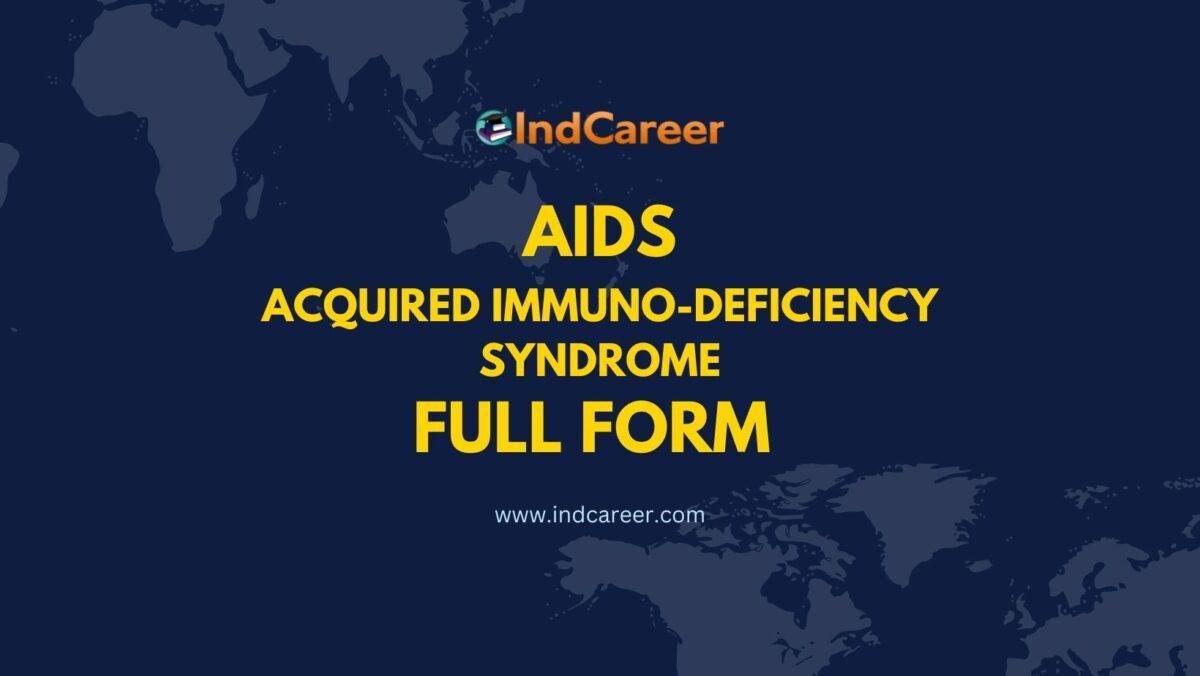Contents
- 1 What is AIDS?
- 2 The Origin of AIDS
- 3 Causes and Transmission
- 4 Symptoms of AIDS
- 5 AIDS Diagnosis and Testing
- 6 HIV vs. AIDS
- 7 Progression of the Disease
- 8 AIDS Treatment and Management
- 9 Preventive Measures
- 10 Myths and Misconceptions
- 11 The Global Impact of AIDS
- 12 Support and Awareness
- 13 Research and Innovations
- 14 Conclusion
- 15 FAQs
In this article, we will delve into the meaning and full form of AIDS. Acquired Immunodeficiency Syndrome, commonly known as AIDS, is a serious and often fatal condition that has affected millions of people worldwide. Understanding the full form of AIDS and its implications is crucial in raising awareness about the disease and taking preventive measures.
What is AIDS?
AIDS is a medical condition caused by the Human Immunodeficiency Virus (HIV). It weakens the immune system, making it difficult for the body to fight off infections and diseases. The full form, Acquired Immunodeficiency Syndrome, refers to the “acquired” nature of the disease, as it is not hereditary but acquired through the transmission of the HIV virus.
The Origin of AIDS
The origins of AIDS can be traced back to the early 1980s. Scientists believe that the virus originated in non-human primates in Central and West Africa and was transmitted to humans through contact with infected blood or body fluids.
Causes and Transmission
HIV, the virus responsible for AIDS, is primarily transmitted through unprotected sexual intercourse, sharing contaminated needles, and from an infected mother to her child during childbirth or breastfeeding. It’s important to raise awareness about these modes of transmission to prevent further spread of the disease.
Symptoms of AIDS
In the initial stages of HIV infection, individuals may not experience any noticeable symptoms. However, as the disease progresses, common symptoms of AIDS may include persistent fever, fatigue, weight loss, swollen lymph nodes, and recurrent infections.
AIDS Diagnosis and Testing
Diagnosing AIDS involves testing for the presence of HIV antibodies in the blood. Various tests, such as ELISA and Western Blot, are used to confirm the diagnosis. Early detection and testing are essential for timely medical intervention and management.
HIV vs. AIDS
It’s crucial to understand the difference between HIV and AIDS. HIV is the virus that causes AIDS, while AIDS is the advanced stage of the HIV infection, characterized by severe immune system damage. Not all HIV-positive individuals have progressed to AIDS, especially with proper treatment and care.
Progression of the Disease
The progression of HIV to AIDS can vary from person to person. Without treatment, HIV gradually weakens the immune system, making the individual susceptible to opportunistic infections and certain cancers.
AIDS Treatment and Management
While there is no cure for AIDS, significant advancements in medical science have led to antiretroviral therapy (ART), which can help control the virus and improve the quality of life for those living with AIDS. Proper medical management and adherence to treatment are crucial for slowing disease progression.
Preventive Measures
Preventing the spread of HIV is essential in reducing the prevalence of AIDS. Public awareness campaigns, education about safe sex practices, access to clean needles for intravenous drug users, and programs to prevent mother-to-child transmission are vital components of prevention efforts.
Myths and Misconceptions
Over the years, AIDS has been shrouded in myths and misconceptions, leading to stigma and discrimination against affected individuals. Dispelling these myths and promoting accurate information are crucial in creating a supportive and understanding society.
The Global Impact of AIDS
AIDS is a global health concern that has affected millions of lives and communities worldwide. Certain regions, especially in Sub-Saharan Africa, have been disproportionately impacted by the epidemic, highlighting the need for international collaboration and support.
Support and Awareness
Various organizations and initiatives are actively involved in supporting those living with AIDS and raising awareness about the disease. Access to healthcare, counseling, and social support can significantly improve the lives of individuals affected by the condition.
Research and Innovations
Ongoing research and innovations in the field of HIV/AIDS have led to improved treatment options and potential preventive strategies, such as vaccines. Continued support for research is essential in the quest for a world without AIDS.
Conclusion
Acquired Immunodeficiency Syndrome (AIDS) remains a significant public health challenge, affecting millions of people worldwide. Understanding the full form of AIDS and the impact of the disease is crucial in raising awareness, dispelling myths, and promoting preventive measures. Through continued research, support, and global cooperation, we can strive towards a future where AIDS is no longer a threat.
FAQs
HIV, which stands for Human Immunodeficiency Virus, is the primary cause of AIDS.
Currently, there is no cure for AIDS, but antiretroviral therapy can effectively manage the disease.
HIV is transmitted through unprotected sexual intercourse, sharing contaminated needles, and from an infected mother to her child during childbirth or breastfeeding.
No, not all HIV-positive individuals progress to AIDS, especially with proper medical management and treatment.
Practicing safe sex, avoiding sharing needles, and participating in public health initiatives can help prevent the transmission of HIV/AIDS.
